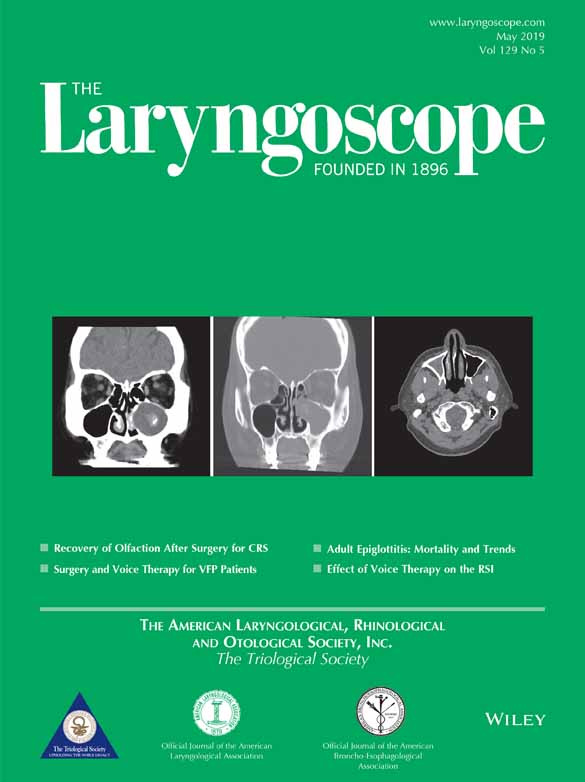Immunologic modification in mono- and poly-sensitized patients after sublingual immunotherapy
Abstract
Objectives/Hypothesis
To compare immunologic modification and treatment outcomes after 2 years of sublingual immunotherapy (SLIT) with house dust mite extracts (HDM) between monosensitized and polysensitized patients with allergic rhinitis.
Study Design
Retrospective cohort study.
Methods
Among the patients who were prospectively enrolled in the SLIT cohort study, patients with allergic rhinitis who were sensitized to HDM and treated with SLIT for at least 2 years were studied. All participants underwent serologic tests at baseline and after SLIT to evaluate changes in immunologic parameters. The total nasal symptom score (TNSS) was measured before and after SLIT, and effective and less effective responder groups were categorized depending on whether patients had a TNSS reduction of 50%, as compared with baseline.
Results
The increase in Dermatophagoides pteronyssinus and Dermatophagoides farinae specific immunoglobulin G4 levels was significantly higher in monosensitized patients than in polysensitized patients (P = .020 and P = .005, respectively). The TNSS significantly improved after SLIT in both the monosensitized and polysensitized groups (P < .001 in both groups). However, the difference in the changes in TNSS from baseline was not significant between the two groups (P = .374).
Conclusions
This study demonstrated different immunologic modifications after SLIT between monosensitized and polysensitized patients. However, patients in the polysensitized group who were treated with single-allergen SLIT experienced clinical improvement in TNSS that was comparable with that in the monosensitized group despite demonstrating different immunologic changes.
Level of Evidence
2b Laryngoscope, 129:E170–E177, 2019




